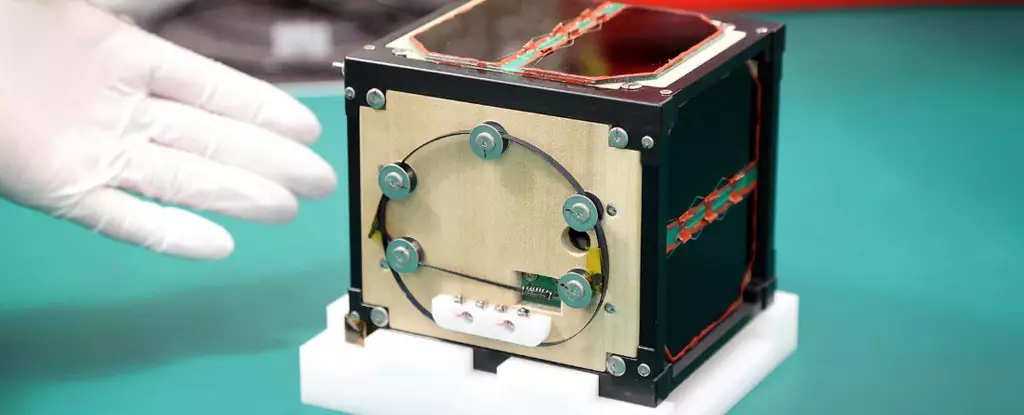In an exciting development in space technology, the world’s first wooden satellite, named LignoSat, has successfully launched aboard a SpaceX rocket as part of a resupply mission intended for the International Space Station (ISS). Spearheaded by scientists from Kyoto University, this unprecedented experiment is poised to revolutionize satellite design by introducing wood as a viable alternative to traditional metal materials. Moreover, the launch marks a significant milestone not only for environmental sustainability but also for the advancement of space engineering.
Space debris is an ever-growing concern that threatens both our planet and the integrity of telecommunications systems. Currently, retired satellites re-enter the Earth’s atmosphere, often resulting in the release of metal particles. These particles pose risks, potentially littering low Earth orbit and posing hazards to active satellites as well as the ISS. LignoSat aims to address this dilemma by burning up upon re-entry. The innovative design is not just an attempt to create a novelty but part of a broader initiative to minimize environmental impact, thereby setting a new standard for satellite construction.
LignoSat is compact and efficient, with each side measuring only 10 centimeters (approximately four inches). This size facilitates easier tracking and management within the confines of the ISS. According to the Japan Aerospace Exploration Agency, the satellite was encased in a specially designed container before being launched from NASA’s Kennedy Space Center in Florida. Upon successful deployment, LignoSat will remain at the ISS for approximately a month before being released into outer space for a series of tests that will measure its resistance to temperature variations and structural integrity over time.
The implications of this project extend far beyond the successful launch of a single satellite. As Takao Doi, an astronaut and special professor at Kyoto University, pointed out, the vision is for satellites made from materials other than metal to become the norm. This shift could significantly reduce the environmental footprint of space exploration and provide a new perspective on satellite durability and manufacturing processes. The data transmitted back from LignoSat will be pivotal in assessing whether wooden satellites can indeed withstand extreme space conditions, potentially ushering in a new era of eco-friendly space technology.
With the successful launch and ongoing trials of LignoSat, the boundaries of what is possible in satellite technology are being pushed. The endeavor’s sustainable focus reflects an increasing awareness of environmental issues in space exploration. If successful, LignoSat may well become a forerunner in a future where wooden satellites are commonplace, blending innovation with ecological responsibility. As researchers continue to gather and analyze data from this satellite, the broader space community remains eagerly optimistic about the positive contributions it may herald for both technological advancement and environmental stewardship in outer space.



Leave a Reply